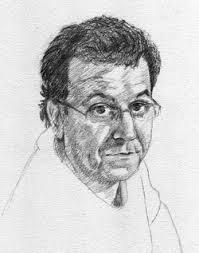Logic and Language Section of Philosophy and Science Studies, How is meaning possible? What indeed is meaning? Whether we speak Danish, Chinese, Maori, or English, we take for granted that we can express content and that others can grasp it. But what are the mechanisms that lie behind this? What is their structure? What must the world be like if language is to function as a way of communicating information? And - the key question for this course - what, if anything, does logic have to do with any of this? This course attempts to provide some answers. We will examine how logical representations can be built up compositionally (that is, how word meanings can be plugged together Lego-style into logical representations for entire sentences) and how meanings make inference possible. The interplay of grammar, logic and ontology (in particular, the notion of event) will be emphasised. I will also discuss some basic ideas of what is called dynamic semantics. Much of the course covers semantics, or literal meaning. But that is only a part - and perhaps not the most important part - of what meaning is. So I will also say something about pragmatics, or how meaning arises when we actually use language. And, needless to say, I will try to explain what logic has to do with pragmatic meaning. The course is introductory. It is not intended for experts, but for novices, and I will not presuppose any prior knowledge of linguistics. But in order to give even a superficial overview of the topics just sketched, I will have to assume that attendees have at least a basic familiarity with propositional and first-order logic. That is, I will assume that I can write down basic expressions involving first-order quantifiers and the familiar sentential connectives and expect course participants to read and understand them. I will give make more detailed reading suggestions during the course, and will be make a detailed set of slides available to all course participants. In the meantime, here are a four suggestions for background reading. You will get a lot more out of the course if you read this material in advance. |
Preparatory Readings Discourse Representation Theory, by David Beaver and Bart Geurts, Stanford Encyclopedia of Philosophy. I donít know a better introduction to introduction to Discourse Representation Theory (DRT) than this. DRT was the original, and is probably still the most best known, approach to dynamic semantics. Written by two leading semanticists/pragmatists, this article maps out a lot of territory of relevant to this course. Highly recommended.Meaning and Representation in Natural Language: A First Course in Computational Semantics, by Patrick Blackburn and Johan Bos, CSLI Press, 2005. This is the most relevant book to browse before the course starts. In particular, if you are unsure of how much first-order logic you know, please check out Chapter 1. And definitely look at Chapter 2. This presents the lambda calculus, perhaps the basic technical tool used to define compositional semantics, and my first lecture will echo the presentation given here. One important remark. This book not only discusses the basic ideas of semantics, it also shows how to implement them (using the programming language Prolog). You do not - repeat not! - need to read the Prolog based material in this book. Indeed you do not - repeat not! - need any programming expertise whatsoever to follow this course. The Logical Form of Action Sentences, by Donald Davidson, 1967, widely available. This was not the first paper on events, but it was one of the most influential: all modern treatments of the topic take it as its starting point. A (slightly dated) classic. Not all of it is relevant to the course, but it has valuable lessons to teach about the role of ontology in inference. Give it a go. Logic and Conversation, by H.P.Grice. Another classic, and you can find it just about anywhere. It provides the background reading for our discussion of pragmatics. Essential.
| ||||
